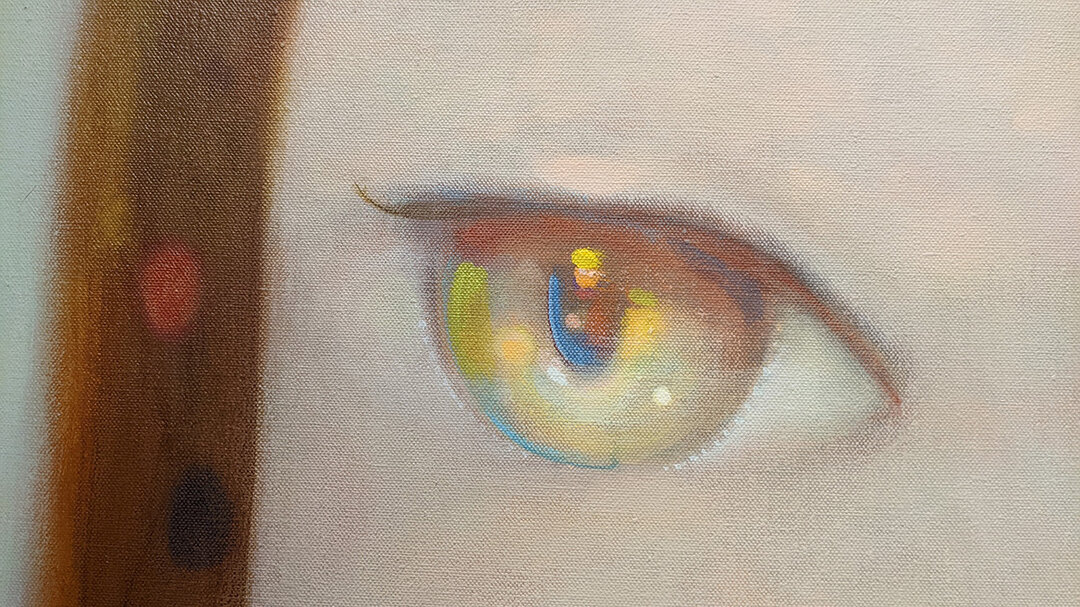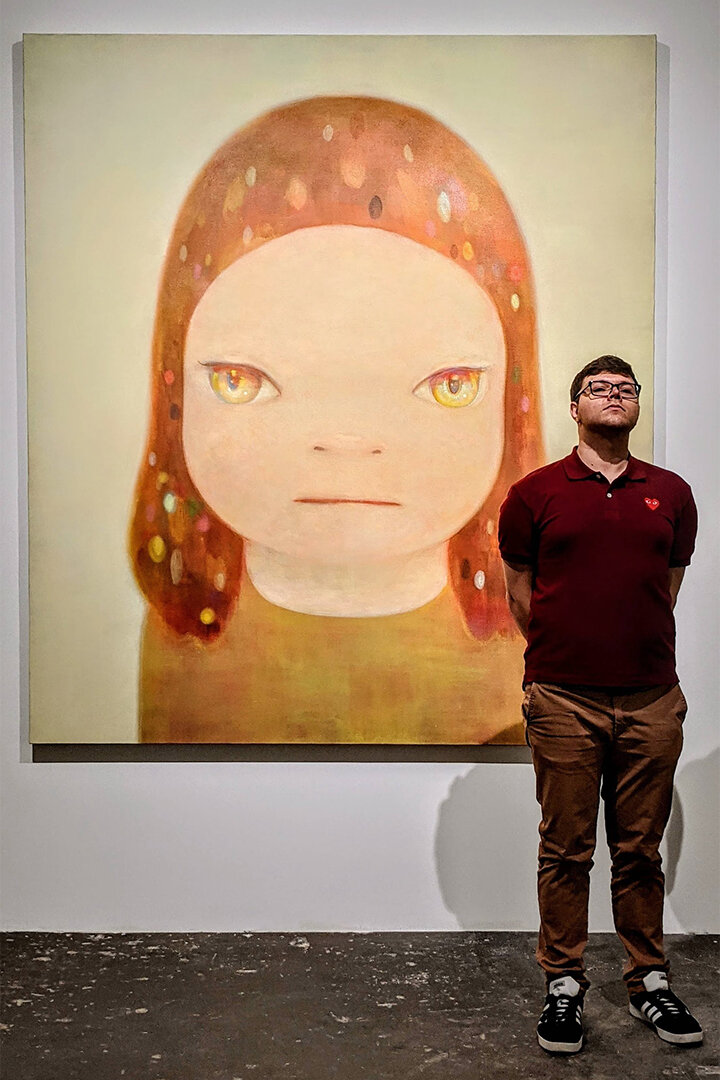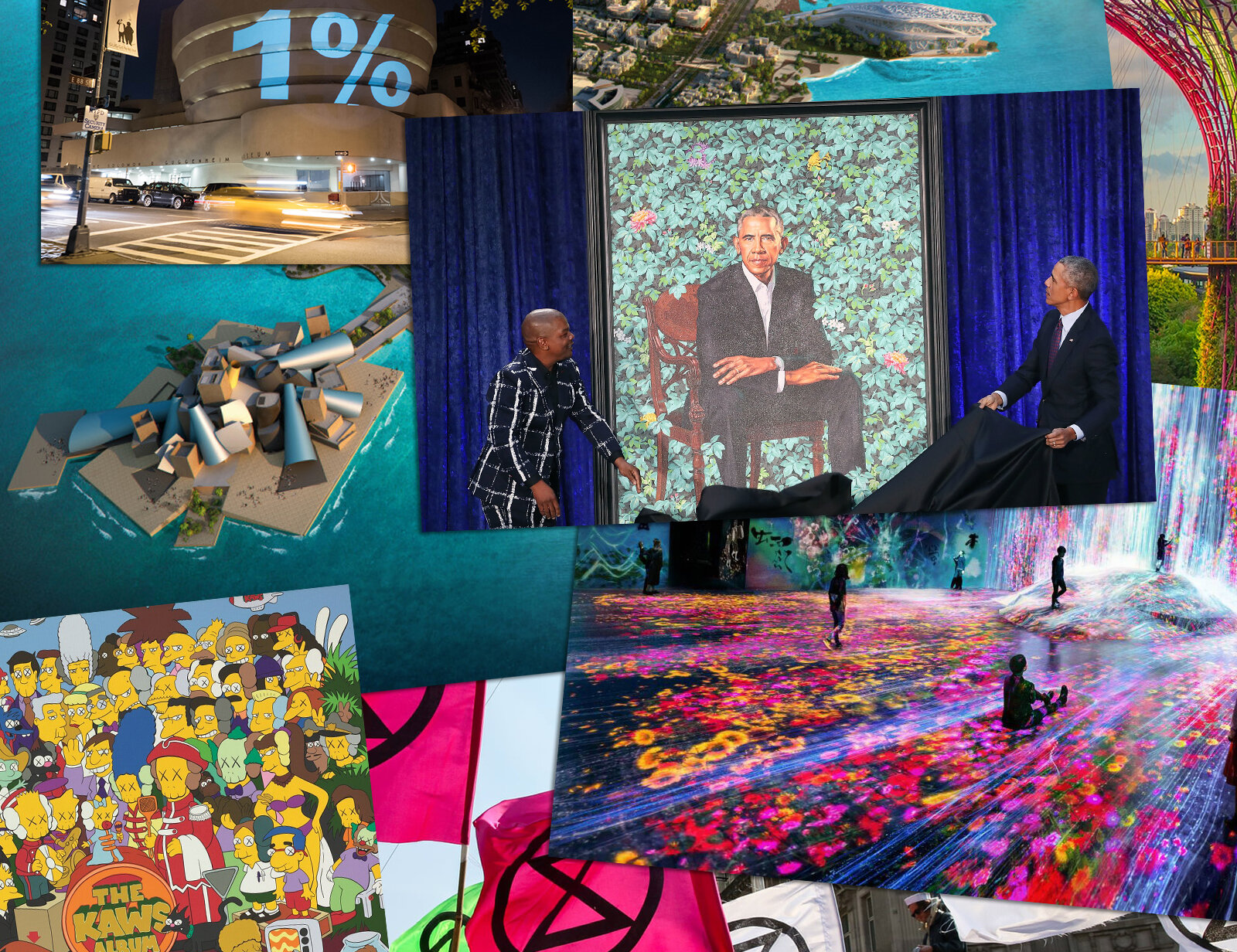Exhibition Review: Yoshitomo Nara at the Dallas Contemporary

Nara explores loneliness, sadness, and tragedy in his latest body of work.
Cover photo: Installation view of Yoshitomo Nara’s exhibit I Forgot Their Names and Often Can’t Remember Their Faces but Remember Their Voices Well, curated by Pedro Alonzo, at the Dallas Contemporary, Dallas, Texas, United States (2021). Photo by Daniel Beauchamp.
★★★★☆
“you could say that they’re self-portraits”
The Era of Angst
Yoshitomo Nara is a world-renowned Japanese artist known for his imagined portraits of young girls. He rose to popularity in the early 2000s alongside contemporaries such as Takashi Murakami. The Dallas Contemporary is hosting a collection of Nara’s work made in the last decade.
These imagined self-portraits betray a fundamental dissatisfaction and eternal angst. Through his unique style, Nara captures a universality in the palpable sadness of his figures. This is captured perfectly in the title of the exhibit: I forgot their names and often can’t remember their faces but remember their voices well.
Nara admits to exhibition curator Pedro Alonzo that he imagines he feels the same way as the girls he depicts. “When I’m painting this kind of painting,” Nara explains, “I never check in a mirror but I’m pretty certain that I have the same expression on my face […] so in a way you could say that they’re self-portraits.”
The exhibition guides visitors through sketches and sculptures and drawings and paintings on wooden panels. There are a handful of jaw-dropping pieces including Wall Painting from Nara’s Cabin and Through the Break in the Rain. For anyone interested in Japanese and/or contemporary art, this is a must-see exhibit.
The exhibit begins with a tantalizing glimpse of an enormous fiberglass dog, which is one of Nara’s more recognizable icons. However this is not the official entrance, and is actually the end of the exhibit.
Instead, the exhibition leads patrons through a narrow hallway filled with colored pencil drawings on cardboard, featuring Nara’s immediately recognizable angry girls.
The entire exhibit is comprised of around 50 works, most of which have been made in the last decade. Nara utilizes natural and found materials, including cardboard, wood, and clay. It’s an interesting mix of work.
While some of these mediums may seem unusual for a fine artist, Japan has a rich history of artistic experimentation. In particular, the avant-garde Gutai movement comes to mind.
Nara explains in an interview with exhibition curator Pedro Alonzo, that following the Fukushima nuclear plant disaster in 2011, he found difficulty working on sterile canvas and preferred to work with these unexpected materials.
“I instinctually felt that I [couldn’t] confront a white canvas right now,” Nara says. He required time to “digest” the disaster. Of the works on raw material, Nara notes, “I felt very free and enjoyed creating them without overthinking”.
It’s very inventive. Some of the cardboard pieces are painted, while with others, Nara embraces the raw browns. He expertly utilizes the colored pencils, allowing for multiple different colors to shine through. The blending is not perfect but the tactile quality is enchanting.
The larger works are really spectacular and completely engrossing. Nara pays special attention to the eyes of every girl. They’re completely captivating. He’s able to accomplish stunning effects with just a few brushstrokes of white and purple and pink…
There’s a vibrancy to his use of color, and his color schemes in general are quite interesting: the way he employs analogous and complementary colors; there’s subtleties and also sweeping contrasts.
Past the initial hallway, visitors are introduced to some of the larger works in the exhibit which includes My Bear and No 4. These are made on an assemblage of wooden panels. The majority of Nara’s canvas paintings are currently on display at the Los Angeles Contemporary Museum of Art.
There’s quite a few sculptural works. Those are generally less refined. Nara has gouged out the details with his bare hands. Nevertheless, the raw quality of these three-dimensional pieces is charming.
Nara draws on a wealth of inspiration from across the world. Having lived and studied in Berlin, a strong German punk influence pervades his oeuvre. Nara frequently combines text with his images, alternating between Japanese, German, and English.
Such text is often derived from the music Nara listens to in his studio. “Sometimes the lyric goes straight through my ear, bypasses my brain, and goes straight to my hand, and gets thrown on the canvas,” he notes.
One drawing appears to be inspired by the young Swedish environmental activist Greta Thunberg, Time’s 2019 Person of the Year, who gained international fame as a result of her school strikes for climate (Skolstrejk för klimatet).
“When I heard about Greta, I felt that I had always tried to create a portrait of a girl like her, even before I met her. In fact, even before she was born,” Nara told Spanish news agency EFE last year. The work is meant to represent “all the young people who are like her in the world.”
There are a couple works that have Russian influence. One is inspired by the tradition of Matryoshka dolls; another is named after the Russian city of Okhotsk. Nara’s interest stems from an exploration of his own ancestry, as his maternal grandfather lived on the Russian island of Sakhalin which was formerly part of Japan.
Recalling his own visit to the island, Nara explains, “What I saw was neither Japan nor Russia; it was a place that is still in between. In fact, I am very interested today in places that are not one thing or another, that are between two things.”
Several works in the exhibition refer explicitly to pacifist desires. Ideals of world peace are ever relevant, but these works feels especially timely today, as such peace seems increasingly elusive during the heightened paranoia of COVID.
The United States is the only nation in history to deploy nuclear weapons in war and Japan is the only nation to suffer the catastrophe. The U.S. bombings of Hiroshima and Nagasaki killed 80,000 and 40,000 people on impact, respectively, and additional tens of thousands due to injury and radiation poisoning. 2021 marks the 76th anniversary of the event.
Daniel Ellsberg, an American military analyst who leaked the Pentagon Papers in hopes of ending the Vietnam War, pursues activist work in hopes of dismantling the global arms stockpile and preventing nuclear armageddon. In his memoir, Ellsberg writes, “This is not a species to be trusted with nuclear weapons.” Nara reflects such a goal.
“the enormity of the tragedy made me realize how small and powerless I felt.”
Alluding to Japan’s tragic history — the World War II era atomic bombs dropped by the United States and the recent Fukushima nuclear disaster — Nara broaches such themes as the loss of innocence and world peace. Referring to Fukushima, Nara recalls, “the enormity of the tragedy made me realize how small and powerless I felt.”
As far as the general presentation is concerned, the Dallas Contemporary is well-known for its industrial look and cold atmosphere. The floor is bare concrete and the lighting is quite harsh.
There’s no seating throughout the space which is disappointing as it encourages the viewer to run through the show, from piece to piece, rather than soaking in any individual work.
The largest drawback is the museum’s lack of labels. Instead, guests are encouraged to scan a QR code upon entrance into the gallery and find the names on a digital map which is not at all mobile friendly.
The label process is frustrating to at best and infuriating at worst. Visitors have to consult the map, find the work’s corresponding number, and then find the title. There’s also no translations for the Japanese or German words that Nara depicts.
As the world seems to be teetering towards greater chaos, war, and isolation, Nara’s work feels increasingly relevant and urgent. A deep loneliness pervades Nara’s work. Each girl has an entire composition devoted to herself. It’s as if they are quarantined to their own canvas. Nara posits, “if the viewer is someone who has a rich sensibility and sensitivity then there’s something that gets communicated”.
Yoshitomo Nara: I Forgot Their Names and Often Can't Remember Their Faces but Remember Their Voices Well is on view at the Dallas Contemporary March 20th through August 22nd.
Entrance is free. Registration is required. Donations encouraged. The Dallas Contemporary is open Tuesday through Saturday 11:00 AM to 6:00 PM and Sundays 12:00 PM to 5:00 PM.




















